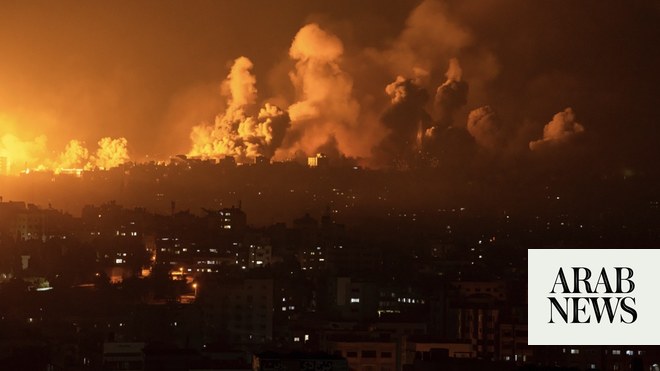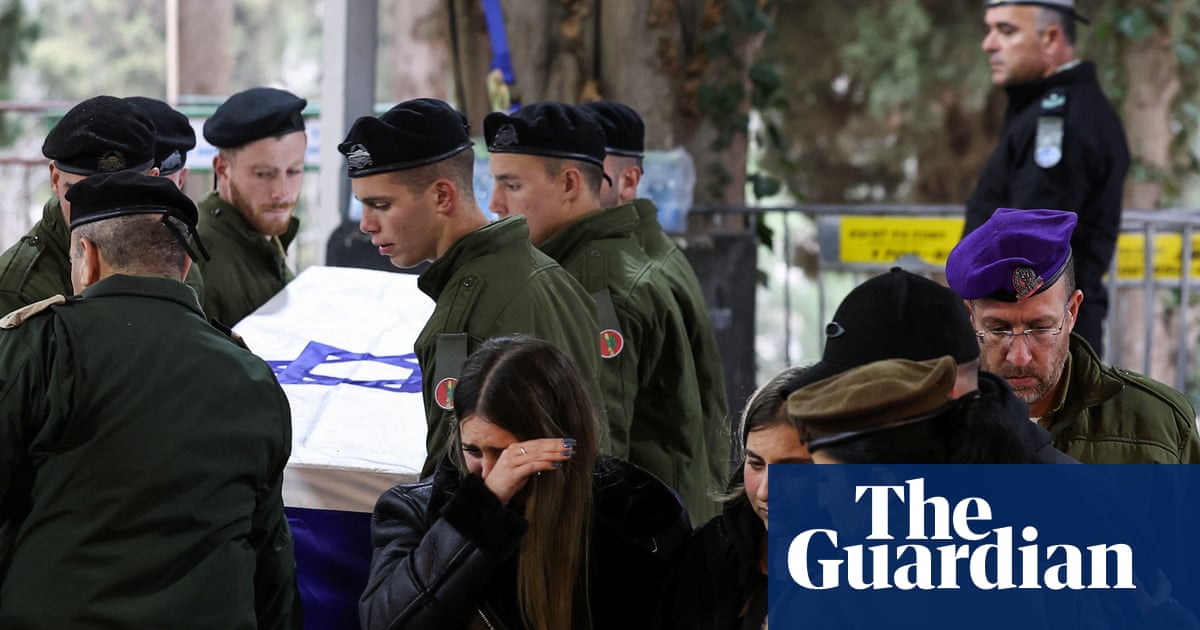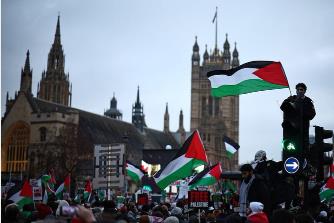
At least 33 Palestinians have been killed in Gaza since the ‘Great March of Return’ began last month
Gaza suffers from a lack of medical facilities and supplies as a result of an 11-year land, sea and air blockade by Israeli forces
GAZA: A tent consisting of nine beds and some basic medical equipment is all that will serve as a field hospital in the Zeitoun area of Gaza when Palestinians gather at the Israeli border to take part in a mass protest against the occupation on Friday.
Eleven doctors and 12 nurses work at the facility during what has become a weekly ritual of defiance and bloodshed for the people of this besieged coastal enclave. With access to only rudimentary supplies, the staff must deal with injuries caused by live ammunition, rubber bullets and tear gas.
When Arab News visited the hospital southeast of Gaza City last week the sound of ambulances rushing back and forth was almost non-stop as the medics worked tirelessly amid the chaos. But no one expects any respite in the month ahead, with the protesters due to return every Friday until mid-May.
“In one hour we have received more than 30 injuries, about 26 of which are to the lower limbs and from live bullets,” said Khalil Siam, a doctor who works at the hospital from 8 a.m. until 10 p.m.
Gaza’s “Great March of Return” began on March 30, when tens of thousands of protesters traveled in buses from across the strip to five locations along the Israeli border.
The demonstration was timed to coincide with “Land Day,” an annual event when Palestinians remember the deaths of six Arab citizens killed by Israeli forces during demonstrations over land confiscations in northern Israel in 1976. It is due to continue until May 15, when Palestinians commemorate the Nakba, or catastrophe — the creation of
Israel.
On the first day of the protest at least 17 Palestinians were killed and more than 1,000 were injured as Israeli troops opened fire on the huge crowds, causing the UN Secretary-General Antonio Guterres to call for “an independent and transparent investigation.”
Then on April 6 several more Palestinians were killed as protesters threw stones and set fire to piles of tires at the border, sending thick clouds of black smoke spiralling into the air.
A handful of field hospitals run by both volunteers and government doctors have been set up to deal with the constant stream of casualties each Friday, but they struggle to cope. Protesters critically wounded in the upper part of the body are rushed straight to Gaza’s main hospitals but staff here also find themselves increasingly overwhelmed by the sheer scale of the bloodshed.
According to the Palestinian Ministry of Health, a total of 33 Palestinians have been killed and 4,300 have been injured between the start of the protests last month and April 14. Thirteen of the casualties have required amputations.
Even before the demonstrations began, Gaza suffered from a lack of medical facilities and supplies as a result of an 11-year land, sea and air blockade by Israeli forces and ongoing divisions between the two main Palestinian political factions, Fatah and Hamas.
Ashraf Al-Qidra, a spokesman for the Ministry of Health in Gaza, told Arab News that all hospitals were facing a situation of “severe attrition.”
“A large number of drugs and medical items have been drained from emergency departments, operating rooms and intensive care units due to the large number of casualties,” he said.
The Israeli government initially refused to allow injured protesters to be moved to the occupied West Bank until Israel’s High Court ruled unanimously on Monday that Yousef Al-Karnaz, a 19-year-old Palestinian, should be allowed to receive urgent medical care in Ramallah.
Al-Karnaz was shot and wounded by Israeli troops on March 30 but was not allowed to leave the strip. As a result, his left leg was amputated.
Ismail Al-Jadbah, director of the vascular department at Shifa Hospital in Gaza City, told Arab News that the strip had enough doctors to cope with the casualties but lacked the necessary resources to give them the best possible care.
“In addition to a shortage of medicine, the large number of injured has put a great burden on us. Treating injuries in the right way, and in the right time, is very difficult,” he said.












